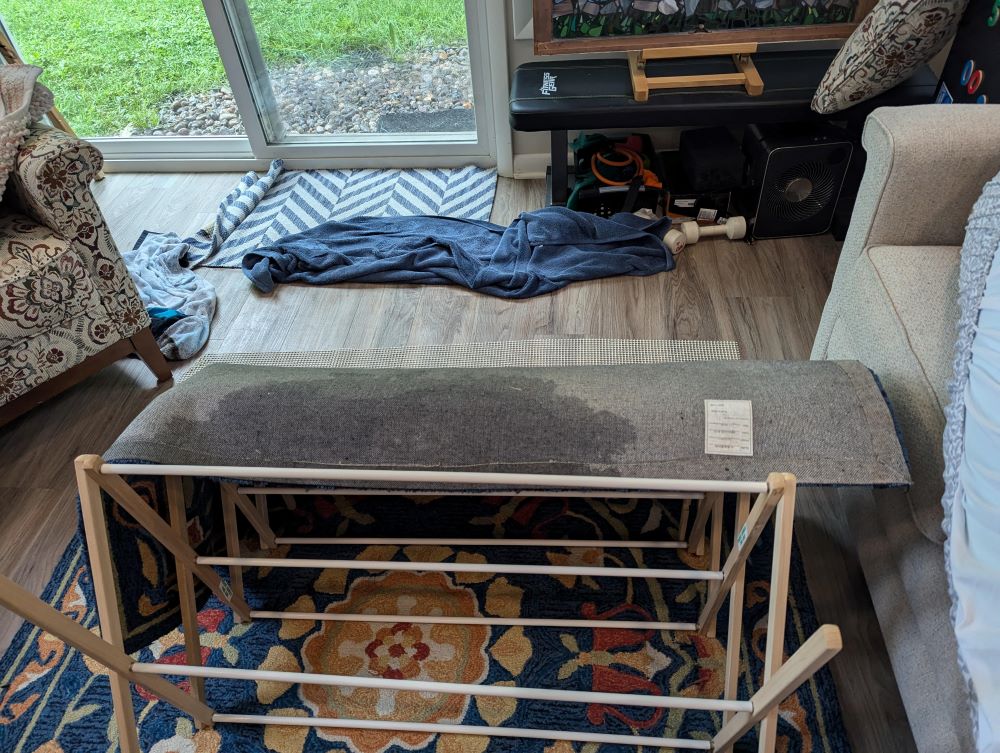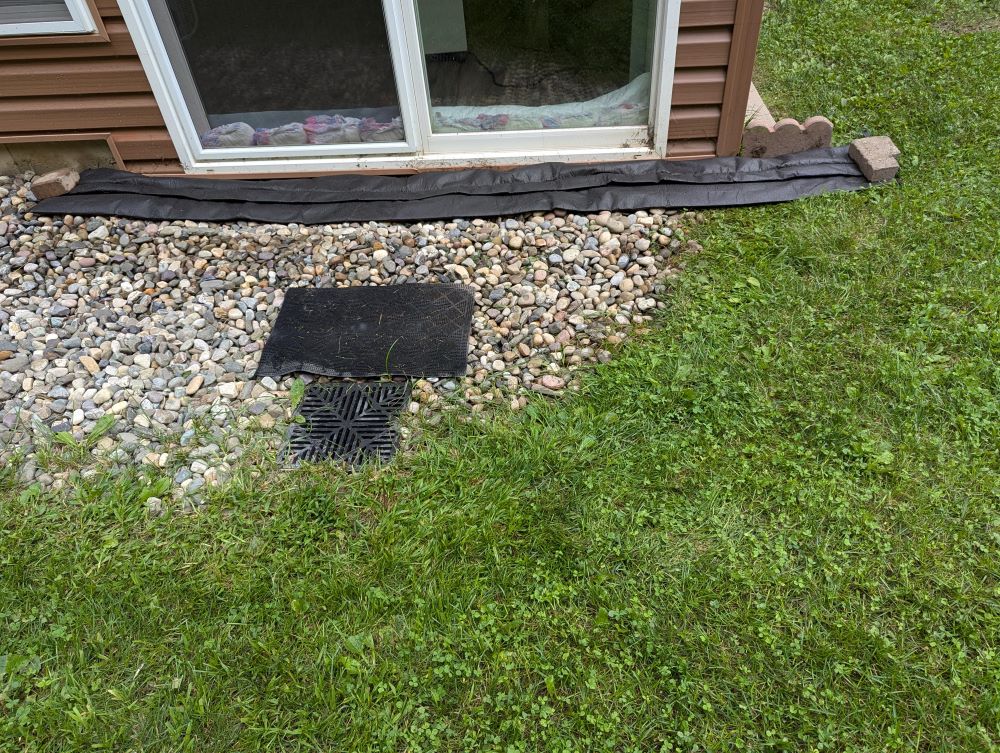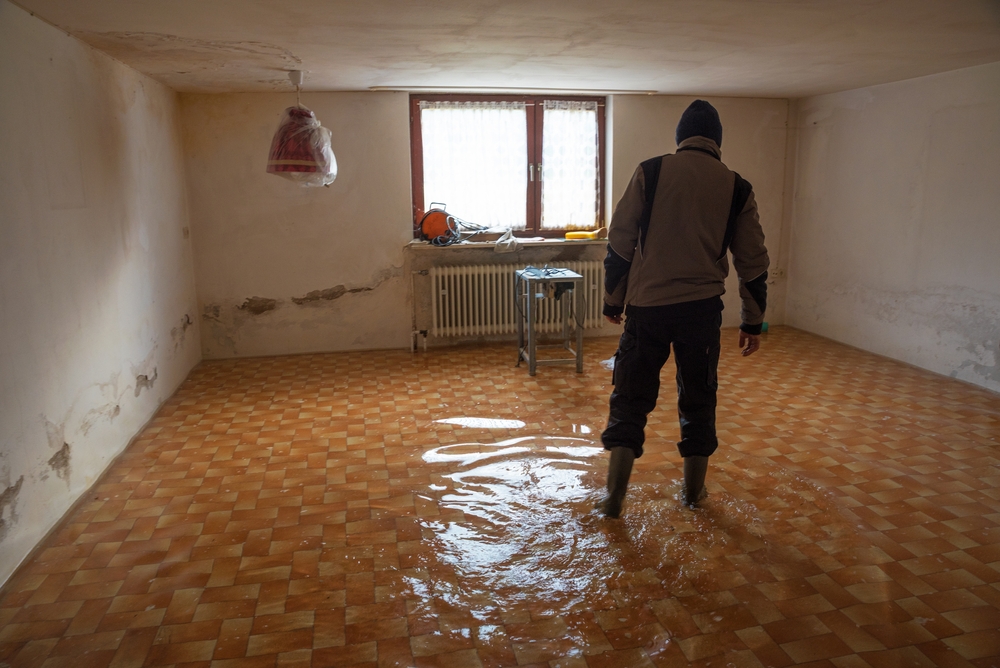This Green Grandma encountered a flooded room in our house when the tail of Hurricane Debby slammed upstate New York.
In 2019, we added a sunroom to the lower level of our split-level ranch home. The sliding doors that lead to the outside face a backyard sloped toward the house. Even though we had new downspouts and a French drain installed at that time, the rain from this storm came too hard and fast to handle the overflow. As a result, water spilled over the top of the sliding door tracks and into the sunroom.
We took on water about a quarter of the way into the room. Because I’d been checking on the status downstairs, I responded relatively quickly with about 20 towels, two buckets, and a lot of wringing out soaked towels that were quick-washed and dried. Nevertheless, the dirt-laden rainwater got under the vinyl planks. Even after the surface dried, our steps onto those planks made water bubble up between them.

When floodwater goes beneath your finished floor
Numerous flooring experts were very clear – we would need to rip up our entire, five-year-old floor, let the concrete below dry fully, and then replace the planks – a job that would cost about $2200. But why invest in the floor if we risk flooding again during the next hard rain? And with climate change, our region is getting more and more heavy rains. In 2024, upstate New York has even had a record number of tornadoes, a rarity in the past.
Before redoing the floor, we’ve had to evaluate what else we can do in our backyard to minimize the risk of future flooding. I share this in case any of my readers face a similar flooding situation.
Steps We’re Taking to Prevent A Future Flooded Room
- What is the most immediate thing we can do to prevent a repeat flooding? We considered the sandbagging we had seen on TV news in advance of more serious floods. With some online research, we learned that there are now “sandless” sandbags that hold a nontoxic, highly absorbent polymer material. We used a product called Quick Dam flood barriers. The seller claims that the material inside is nontoxic and will decompose when exposed to sunlight. It is among the products recommended by a January 2024 article in Popular Mechanics titled “The 5 Best Flood Barriers for Protecting Your Home From Water Damage: The best flood barriers for doors, houses, and natural disaster preparedness.” We now have two ten-foot-long barriers outside our six-foot-long sliding doors that will remain there through the season.
- We could see our yard retaining rainwater on one side of the sunroom below an open gutter that was not covered when we had other gutters capped. The downspout from that gutter is supposed to feed water directly into the French drain. We assume that the uncapped gutter had filled with leaves and other debris, causing it to flow over onto the ground instead of carrying the water down the drain. Why didn’t we have it capped sooner? That remains a mystery to me and my husband! But we’ve now scheduled the gutter cleaning and must wait another week or so to have it capped.
- A second downspout, along with rainwater from the sloped yard, also feed into the French drain. On the other corner of the house, we had installed a rain barrel beneath the downspout. When the barrel fills and overflows, an attached hose carries the excess water to the driveway, and it flows down to the street toward the city’s stormwater drains at the end of our block. We ordered a new rain barrel with an overflow hose and will attach it to the corner by the sunroom. There are added benefits to rain barrels. When rains are heavy, they slow down excess water and help avoid overwhelming storm drains. Rain barrels also hold water that can be used for gardens or lawns during drier conditions.
- For the longer term, we will explore additional, more expensive landscaping alternatives, beyond those in which we had already invested. Perhaps we will need to add another French drain, or a rainwater pond, or additional rain-absorbing vegetation. But first, we need to see how well the above steps address our backyard water problem.
- At the neighborhood level, when I’m at home and a heavy rainstorm is forecast, I check the stormwater drains at the end of our block. If covered with leaves and other debris, rainwater will flood our street. Just a day before the last storm, a city street-sweeping vehicle had cleared those drains. But they were clogged up again from a lighter rain the next day. I cleared them again before the bigger storm hit, so the heavy rains did not back up into the street in front of our house.

Advice for Other Weather Disasters
Compared with the weather disasters many are facing in this era of climate change fueled by fossil fuel usage, our small flooding is a manageable problem. To help others who face far more serious weather disasters today, here are a few of my past blog posts that offer some advice.
Heat related illness – What is it and what can you do about it?










